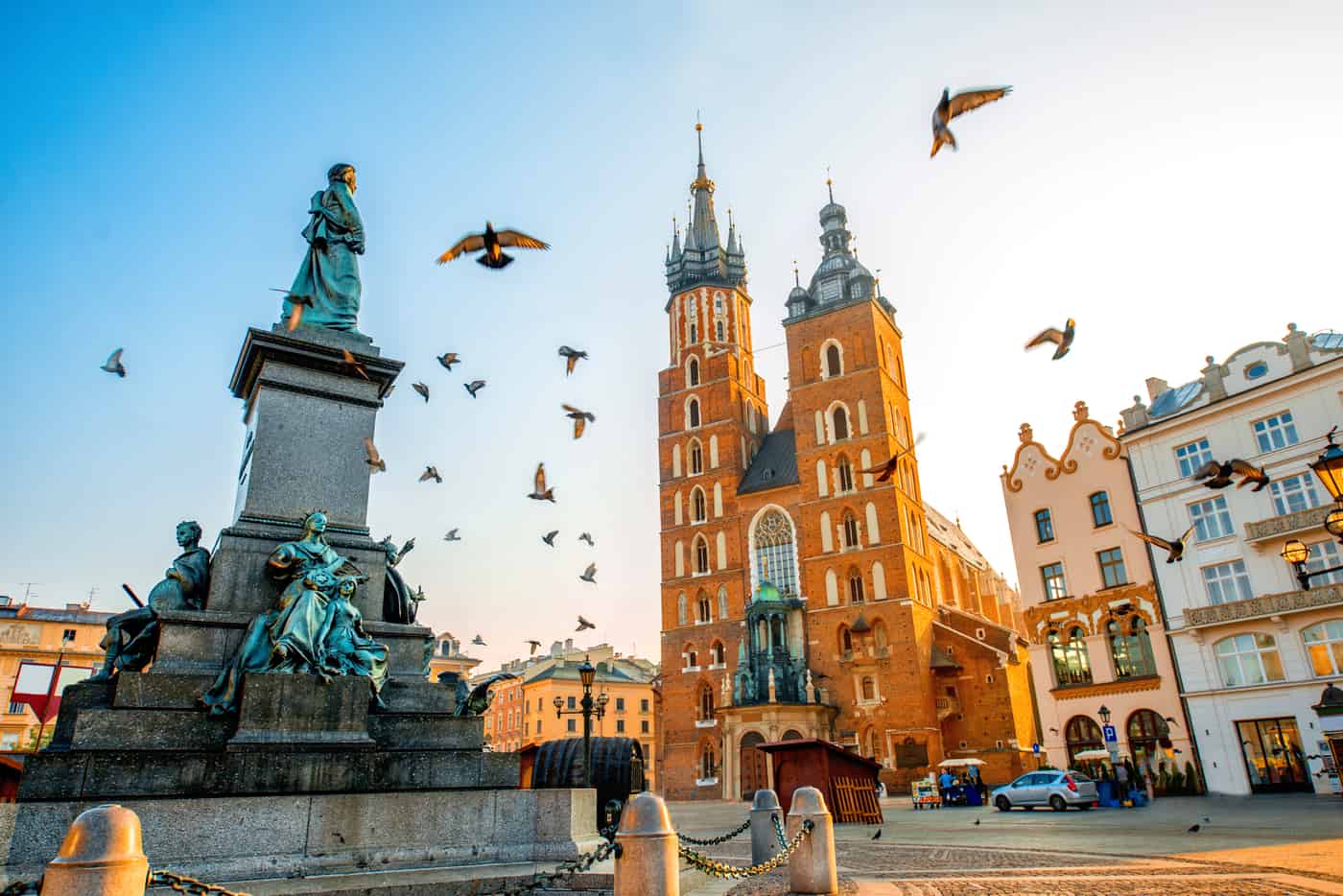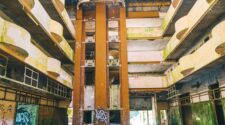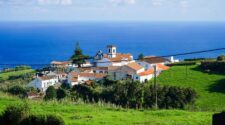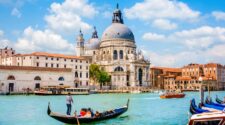In the 13th century, Mongols descended upon Krakow and flattened the city, forcing everyone to begin again. But despite the fall of the monarchs, German invasion and time within the Soviet Union, many of Krakow’s highlights have since remained largely untouched.
The layout and many buildings that were created in the 13th and 14th centuries stand before you in Krakow’s magical Old Town. Its concentration of churches, trading halls and squares makes it easy to see it all on foot. Krakow also features an incredible density of bars, transforming its historic district into a record break nightlife hot spot.
With the best things to do in Krakow, Poland, travelers will enjoy a thrilling mix of history, food and fun. Let’s dive in.
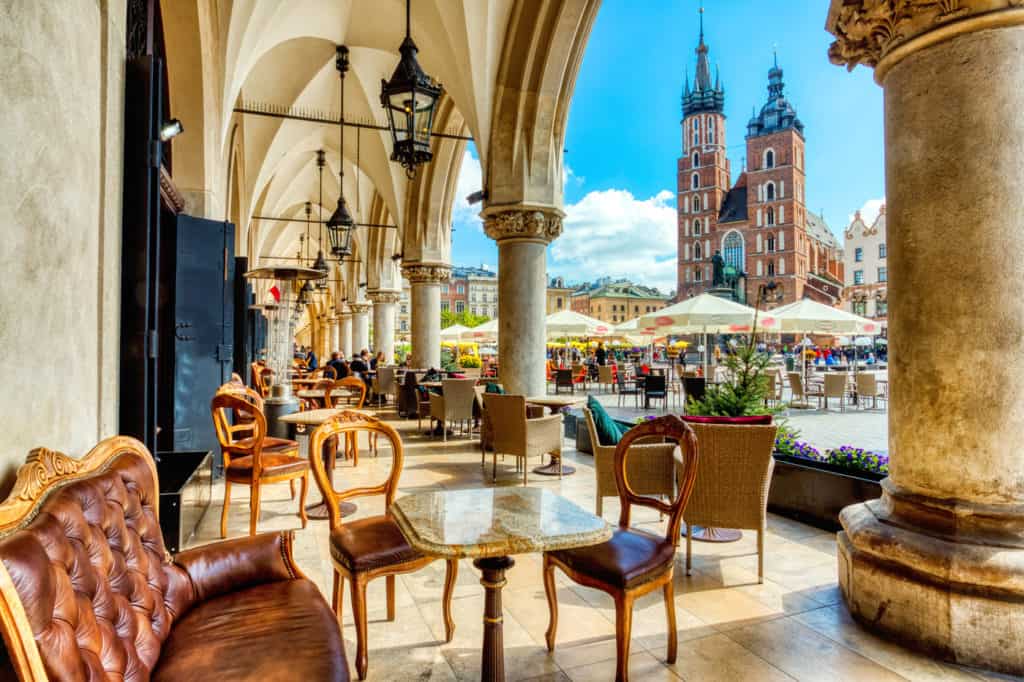
Explore Main Market Square
In the heart of Krakow’s Old Town, Main Market Square dates back to the 13th century. It’s one of the largest town squares in Europe and boasts an amazing collection of historic sights.
The pristine paved square is enveloped by old buildings looking down on you like a collection of proud grandparents. From your vantage point, you’ll be able to gaze up to the top of the soaring St Mary’s Basilica along with the facade of the iconic Cloth Hall. Just steps away from the square are more prominent sites, including the Collegium Maius.
But travelers shouldn’t be in any rush. The vibrant square is always teeming with action and excitement. The cafes are full of patrons, with many locals and travelers alike enjoying a to-go drink as they sit and take in the sights and sounds. It’s a magical place to be at any time of day and is the perfect spot from which to embark on your many adventures.
This walking tour begins at Main Market Square, before taking you to all the highlights of Krakow’s splendid Old Town.
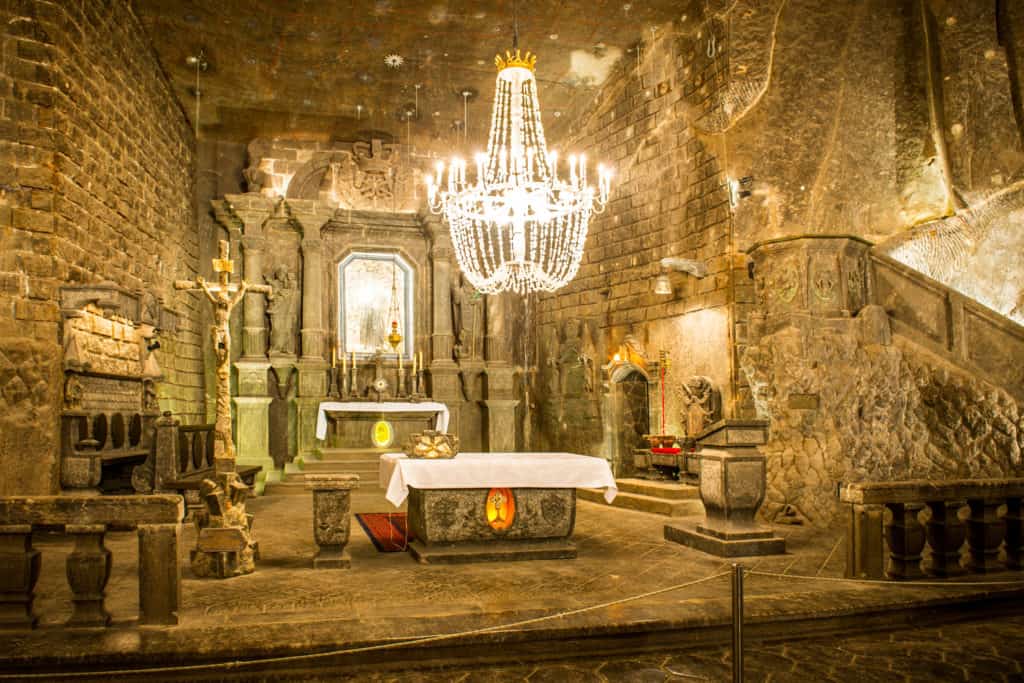
Venture Into the Wieliczka Salt Mine
Boasting one of the biggest mining heritage museums in the entire world, the Wieliczka Salt Mine is a must see. The salt mine has existed for over 700 years and its sheer size will send your jaw to the floor. Wieliczka covers an incredible subterranean space of 186 miles (300km). But it’s far from your typical mine, as you soon find out .
The mine is located around 30 minutes southeast of Krakow and is spaced out under a town of the same name. Before it closed in 2007, Wieliczka was the longest-running salt mine on earth. Mining wasn’t all that they did. Over the course of seven centuries, they site developed a stunning array of passages, chambers and even churches that transform the experience into something much more.
This half-day tour will take you deep into the mine where the salt streams pour off the walls, providing the opportunity to sample some of the supply. But before you’ve even got the taste out of your mouth, you’ll come across embellished statues and chapels carved by the hands of miners. Just wait until you see the Chapel of St Kinga.
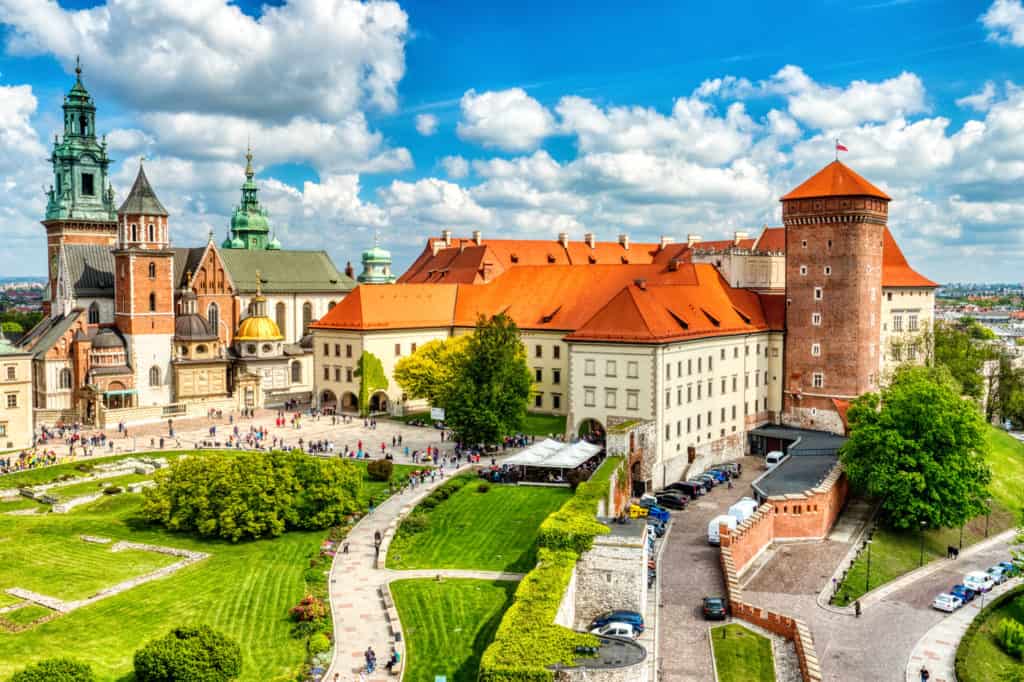
See the Wawel Royal Castle
Steps from the impressive Vistula River, the 13th century Wawel Royal Castle, is a sight to behold. A collection of red roofs, towering green spires and symmetric windows, the castle is every bit a scene befitting of your favorite princess story. Its beauty is even more pronounced when you learn of the efforts of the Prussians and Swedes to bring it to the ground.
Now protected by UNESCO status, the castle has been an open-air museum since the 1940s. For locals and visitors, it’s a chance to explore the history of Poland’s monarch, explore the opulent buildings home to art from European masters and relics from various eras throughout the last 800 years. The highlight is the Szczerbiec, a sword used in almost all coronation ceremonies from the opening of the castle to 1764.
Anyone looking to save a penny or two will be happy to know that a visit to the Wawel Royal Castle and its a cathedral is free. Although getting your hands on an inexpensive audio guide will help elevate the experience.
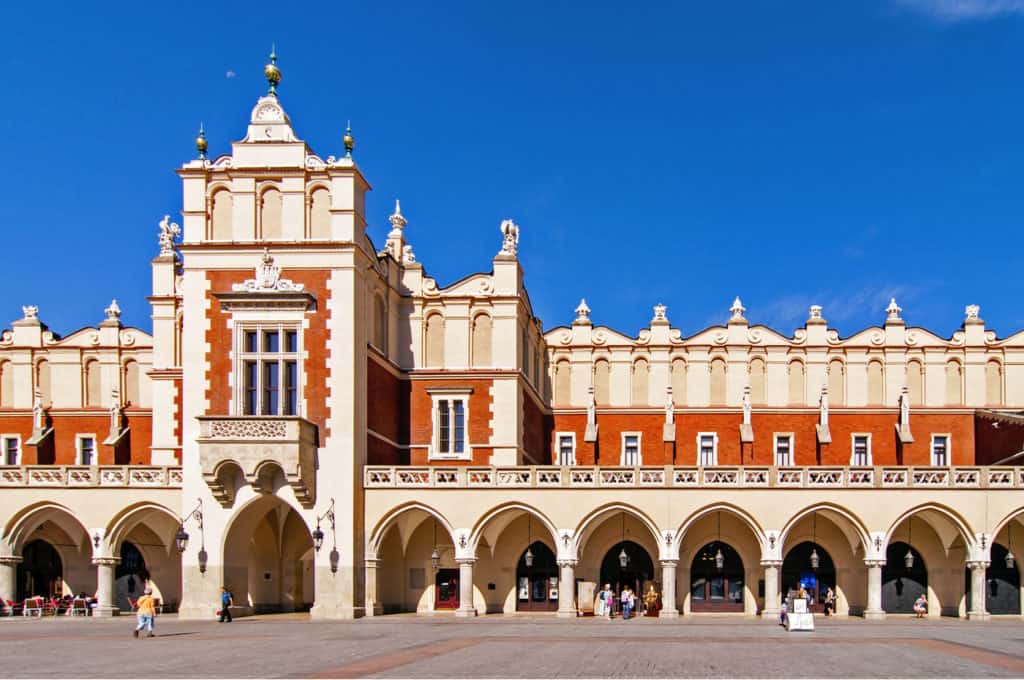
Visit the Cloth Hall
When standing in the Main Market Square, you’ll be able to spot one of the most prominent buildings in Krakow. The Cloth Hall has been a vital structure through much of Krakow’s history. The hall was the center point of trade throughout the city with the addition of international merchants. Throughout the eras, silk, salt, spices, textiles and everything in between have exchanged hands, solidifying the Cloth Hall’s esteemed place in European trade.
Today, the Cloth Hall takes on a slightly different persona. The ways of the world may have changed, but it remains a thrilling place to visit. Before entering the building, take a moment to appreciate the beautiful exterior splashed with Renaissance inspiration, rows of gilded archways, and spires that wouldn’t look out of place on a cathedral.
On the inside, you’ll find some great shopping, albeit designed more for tourists.The various stalls sell all sorts of trinkets and handcrafted goods. For more history, head to the second floor to explore the Sukiennice Museum, where you’ll find a memorable collection of Polish art from the 1800s.
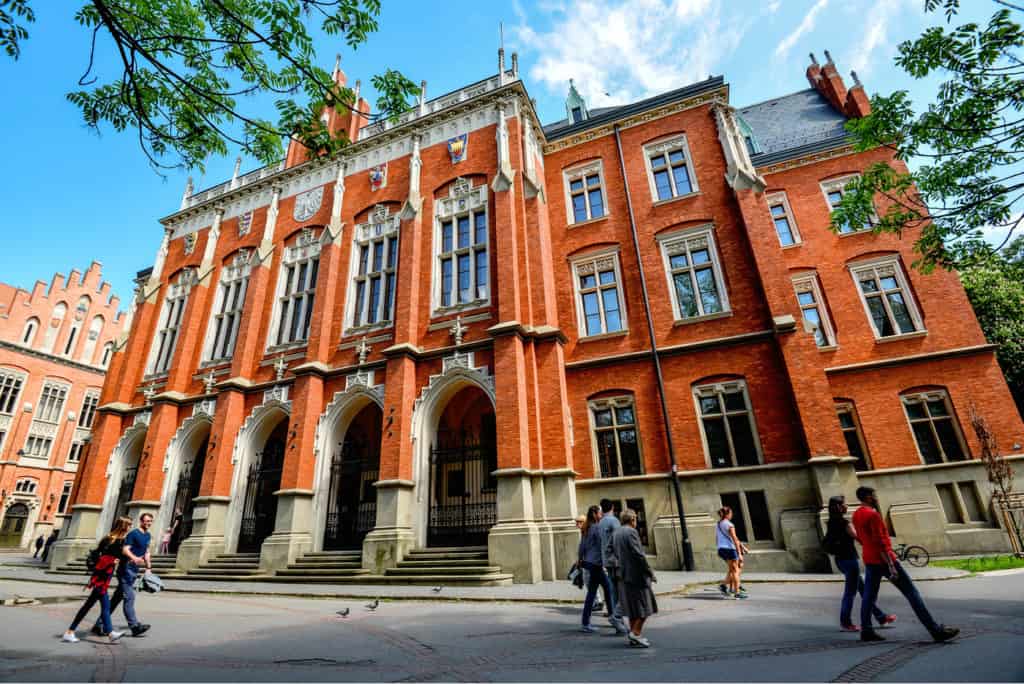
Step Into Collegium Maius
Collegium Maius is the oldest campus of the Jagiellonian University. A quick walk from Main Market Square will bring you right to the storied courtyard surrounded by faculty buildings that were first developed in the 14th century.
The courtyard is enveloped by red brick buildings featuring elaborate Gothic designs, and sharp archways that look every bit 650-plus years old. In a good way. Many famous historical figures, including Copernicus, studied here. The campus has long been at the forefront of local culture, art and literature and you can easily sense its rich history.
From the courtyard, step into the surrounding buildings where you’ll discover a world of lecture rooms, private quarters and ceremonial halls. Afterwards, check out the on-site library and museum. The latter features a globe that depicts the Americas and is the oldest such example in existence. Other highlights of the museum include more scientific instruments like sundials, astrolabes and microscopes that helped change the way we see the world.
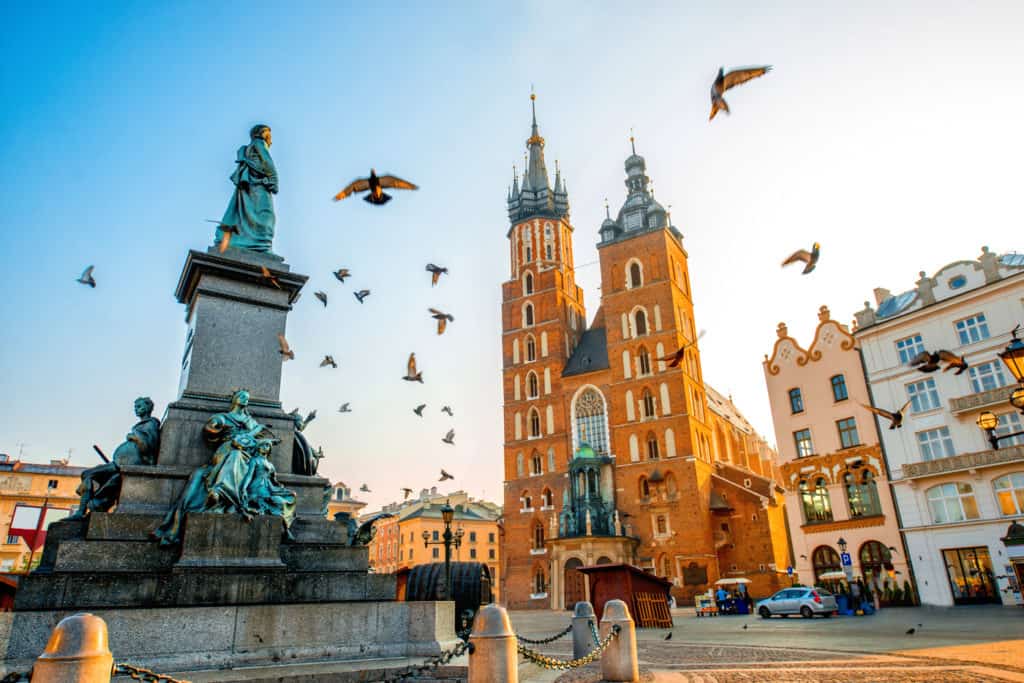
Admire St Mary’s Basilica
Built in 1347, St Mary’s Basilica has towered over Main Market Square for almost 700 years. The red-brick cathedral has lost none of its grand presence during that time, having seen multiple eras of peace, conflict and changing of the guards.
St. Mary’s Basilica features to striking towers, the tallest one reaching a height of 262 feet (80m). Whenever you’re in the famous square, you’ll be taken aback by the dramatic cathedral which never fails to evoke awe and wonder. But with that in mind, prepare for more amazement once you’ve gone inside.
It’s within that you’ll discover the famous wooden altar piece that was painstakingly carved by Veit Stoss across the span of seven years. On the altar are hand-crafted figures made of limewood backed by polychrome murals, creating a memorable experience for art lovers, architecture aficionados and worshippers alike.
On the hour, every hour, the basilica’s trumpet blows from the top of the tallest tower. It shutters off halfway through to immortalize a trumpeter who warned Krakow of an impending Mongol invasion in the 1200s before meeting his death.
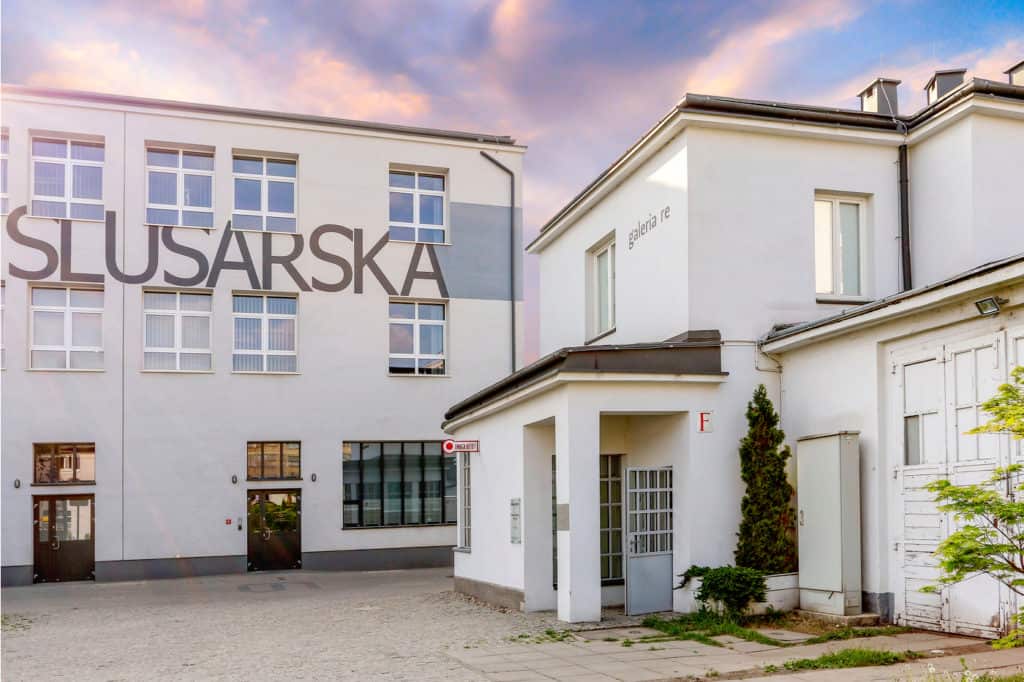
Tour Oskar Schindler’s Enamel Factory
The story of Oskar Schindler garnered worldwide fame on the back of the 1994 film, Schindler’s List, and you can visit the real factory right here in Krakow. The factory first opened in 1937 and developed enamel and sheet metal. Two years later, Oskar took over the helm, an event that would save countless lives.
The Second World War began around the same time as Oskar Schindler, a German, took over the factory. He began to gather information that he would then overlay for the Nazis. All the while, he began to employ more and more members of Krakow’s Jewish community to work in his factory. By cooking the books, he was able to stop his workers from going to concentration camps.
Visitors can step into Schindler’s office and look over his list, which featured the names of over 1,000 Jewish people. Much of the experience is also focused on the Nazi occupation of Krakow. Skip the line and pick up a ticket to the factory through GetYourGuide.
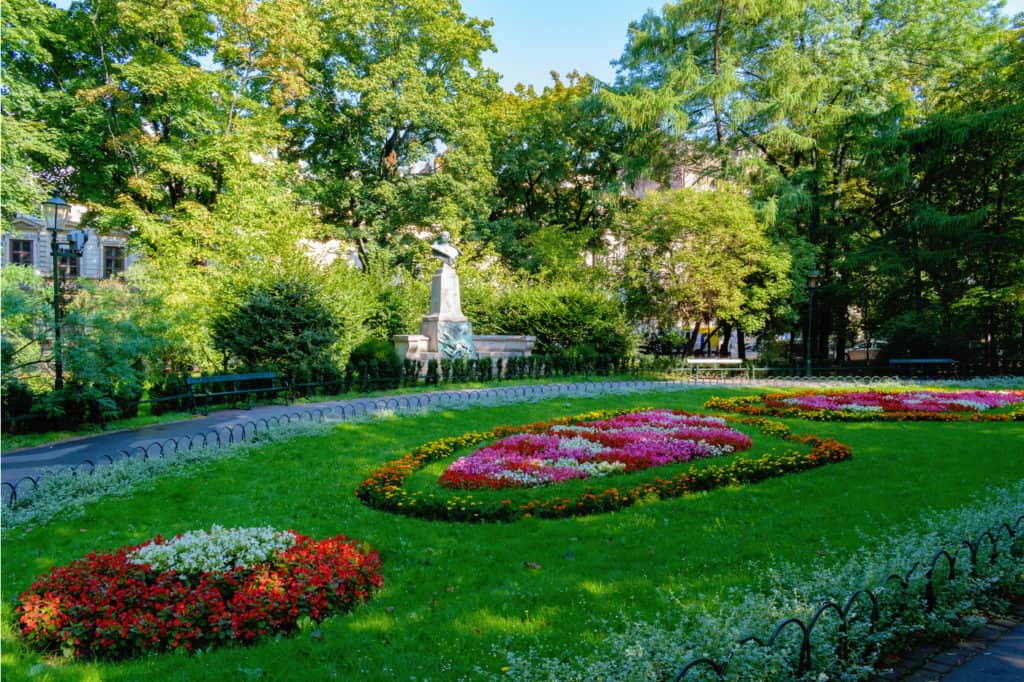
Have a Park Day
After a fairly heavy experience at Oskar Schindler’s factory, treat yourself to a day at Planty Park. This lush green space envelopes all of Krakow’s Old Town and was where the city’s moat and medieval walls once existed. At the beginning of the 19th century, the city’s fortifications changed, making room for Planty Park, providing you with an elegant and tranquil place to visit.
The paved pathway is a splendid way to get around the city, even when you aren’t settling in for a park day. If you are up for a stroll, it will take around an hour to complete the circle with many exit points to top shelf attractions, not to mention rows upon rows of old-growth trees.
Along the way, you’ll find plenty of benches to sit and rest. But its spacious lawns will welcome you with open arms. With some classic Polish picnic food in hand (think potato pancakes and Mizeria) kick back and enjoy the scenery with history, beauty and culture all around you.
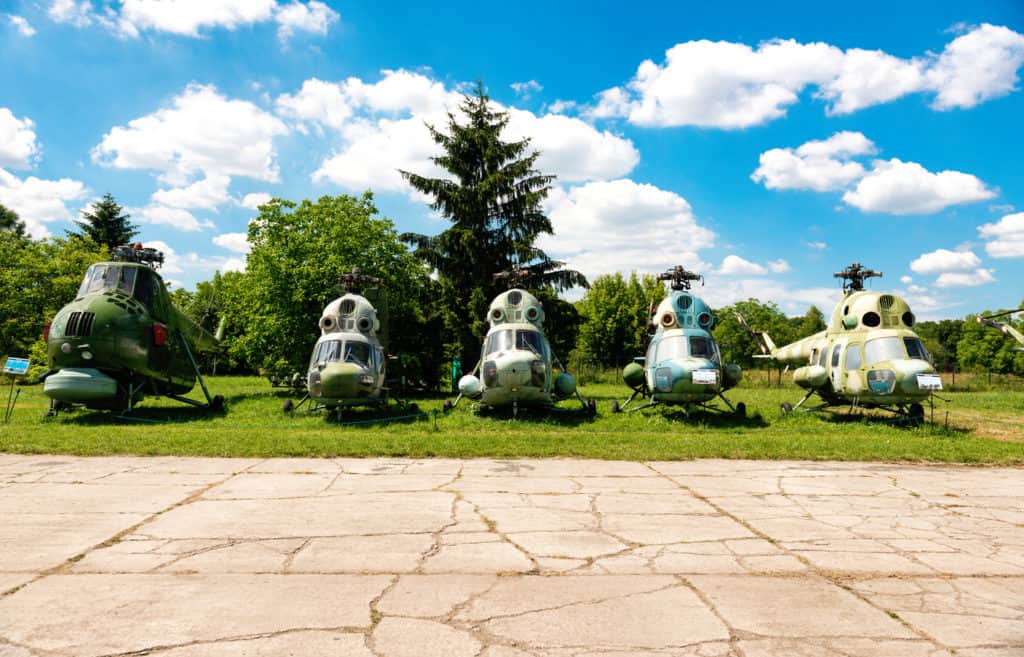
Explore the Polish Aviation Museum
Aviation buffs will need no excuse to make their way to the Polish Aviation Museum. Located within a discontinued airport, the museum has a spectacular array of old-time planes (and plenty of unique ones) spread across a vast space.
The old Krakow-Rakowice-Czyzny Airport closed in the 1960s, having been one of the oldest in Poland. For 44 years it laid mostly dormant until the Aviation Museum set up shop. Today, it features a collection of 300 aircraft while also playing host to an annual airshow that runs at the end of June.
The top attractions in the museum include Polish planes that existed prior to the Second World War and the only such airplanes on earth. Alongside them, you’ll find classic and contemporary fighter jets, bombers and helicopters.
Those traveling through Krakow on a budget should aim to visit the Polish Aviation Museum on a Tuesday, when the entry fees are dropped.
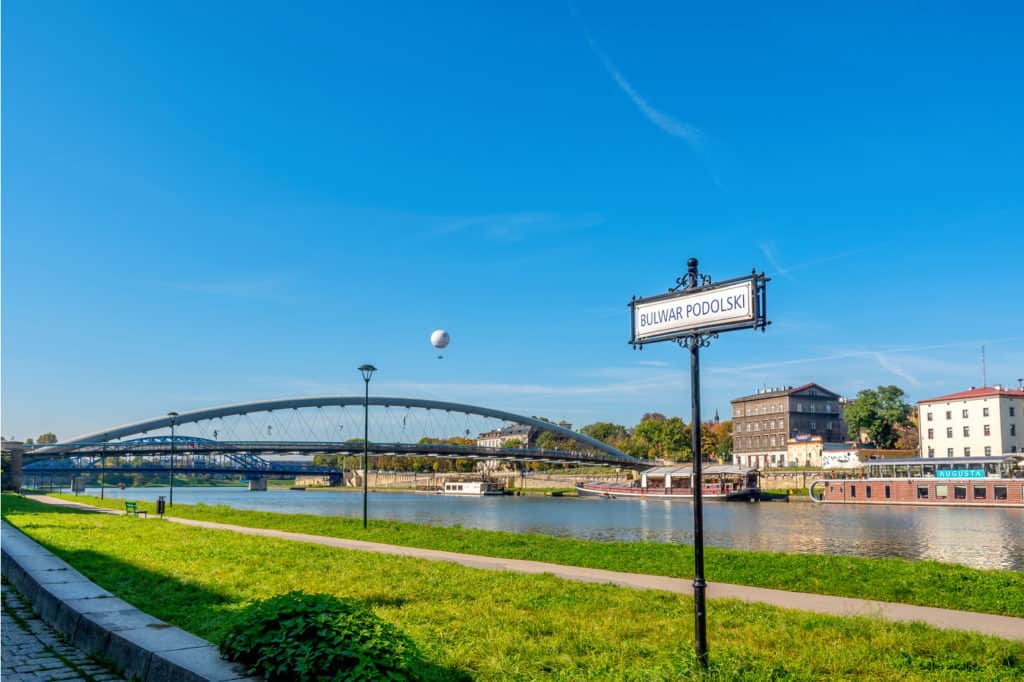
Take a Stroll Down the River
The Vistula River is one of the longest rivers in all of Europe. It snakes its way from south to north all the way into the Baltic Sea. But first, it cuts through Krakow, providing for a serene stroll through the city. By day, you’ll find young families and strollers rolling up and down the banks while students kick back and catch up with friends.
As you stroll along the river, you may notice just how wide the riverbanks are. They rise slowly from the river like stadium seats providing lots of lush green space to picnic and people watch. This also leaves room for open bike baths and spots for large groups to gather before jumping on Krakow’s River Tram, which runs from May to September.
Not only is the river a lovely way to experience the beauty of Krakow, many top attractions are located along the Vistula. These include the aforementioned Wawel Castle, Oskar Schindler’s Enamel Factory and the charming neighborhood of Kazimierz.
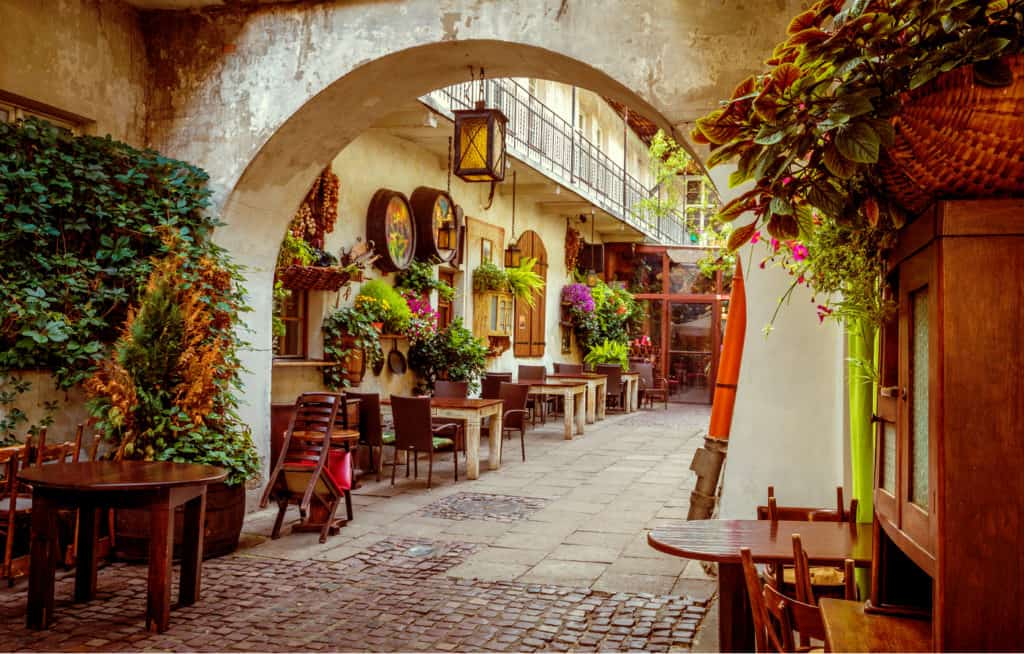
Make Your Way Around Kazimierz
Once an entirely separate island, and not a part of Krakow, the water surrounding Kazimierz was filled in. Since the beginning of the 19th century, it has been a part of the city, playing a fascinating role in developing Krakow’s international flair.
For centuries, Kazimierz was a place of refuge for the Jewish community who came to Poland from Spain, Italy, Germany and further afield. Not only has this given Kazimierz an Old City feel but also a number of startling buildings, including a trio of synagogues.
In the modern era, Kazimierz has taken on a different personality while still harboring the tales of centuries past. It’s a vibrant and hip district that is packed with exciting restaurants slinging amazing vegetarian food and more than a few vintage shops to keep you busy. Between them both, you’ll find eclectic artisan shops and an unexpected array of public art.
You can see all this and more on a guided tour of Kazimierz, that also includes a visit to Oskar Schindler’s factory.
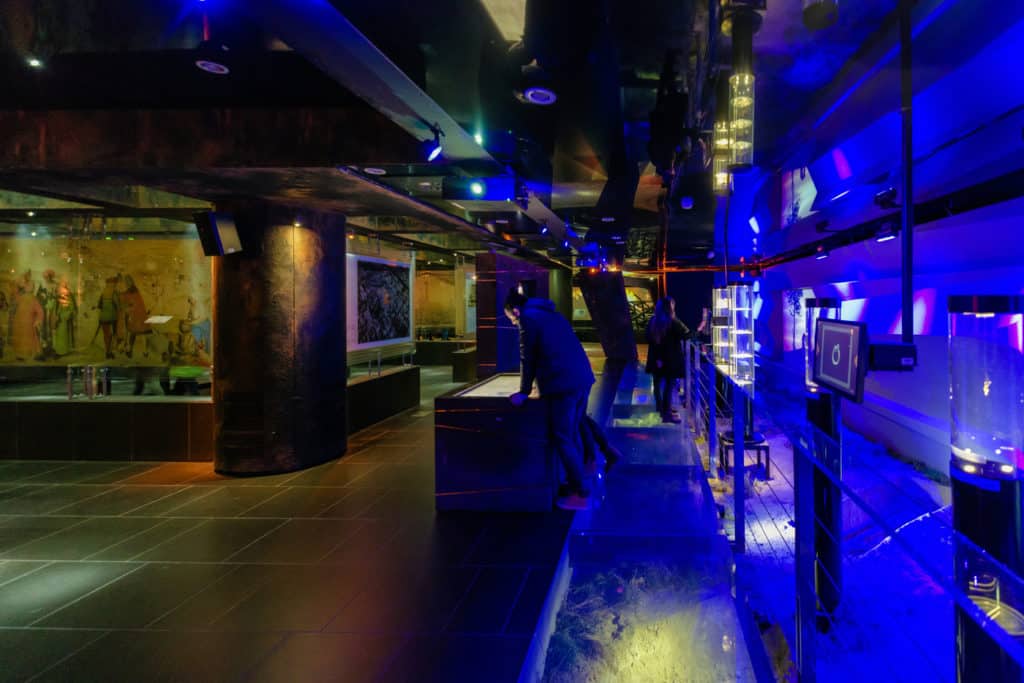
Head to the Underground Museum
The Historical Museum of Krakow is split up into 17 separate branches. Some of these include Schindler’s factory and the Krzysztofory Palace listed below. If you love your history, then you could easily create a whole trip out of visiting every one. But with so many amazing things to do in Krakow, it’s best to choose just a handful of the best. One of the most popular museums in town is the Underground Krakow Historical Museum.
The name itself will elicit excitement out of travelers who are in for a unique museum experience. Otherwise known as the Old Market Underground, this museum is placed beneath the Main Market Square. After entering, you’ll walk through a spine-tingling steam curtain that sweeps you up and takes you back to the Medieval age.
The museum boasts some of Krakow’s most impressive excavated artifacts discovered by archaeologists. Across the spacious museum you’ll find maps of old-time trade routes, relics from destroyed communities from a thousand years ago plus a 12th century workshop reconstructed using the materials unearthed hundreds of years later.
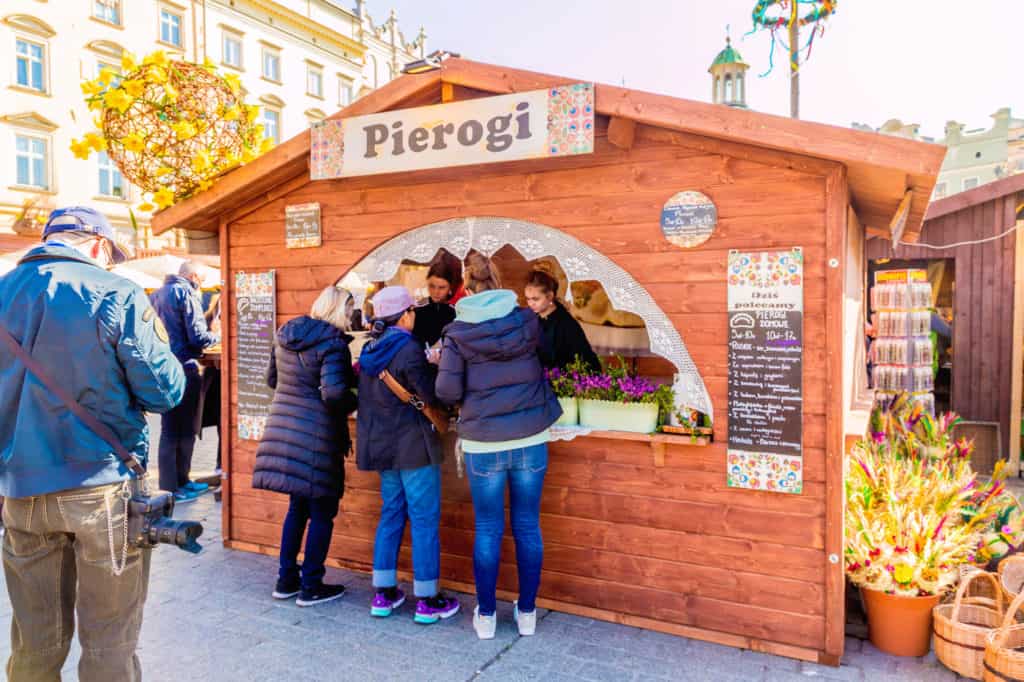
Try the Local Cuisine
One of the first things you’ll learn about Polish cuisine is the how heavy the local dishes can be. It’s a calorie bomb matched by few international cuisines. But trying all the eats on your trip, you’ll really get to know Krakow and Poland on a whole different level.
After waking up for another day in Krakow, skip the breakfast restaurant and find a street cart slinging mouthwatering bagels. Yep, the kind to rival a Long Island or Montreal bagel. But forget the cream cheese. Order it with some oscypek, a smoked sheep’s cheese. Another popular street food is kielbasa, a top choice for a midday snack or even lunch. Just be sure to wash it down with a local lemonade.
When it comes to your evening meal, you’ll be spoiled for choice. Especially if you don’t mind walking away with a bigger belly. Try some bigos, aka hunter’s stew complete with chopped sausage, sauerkraut, onion and mushroom. Plus, add on a side of delicious pierogies, Poland’s national dish.
Foodies, however, shouldn’t stop there. Embark on a traditional food tour to learn about the local gastronomy and Krakow culture while sampling the best eats.
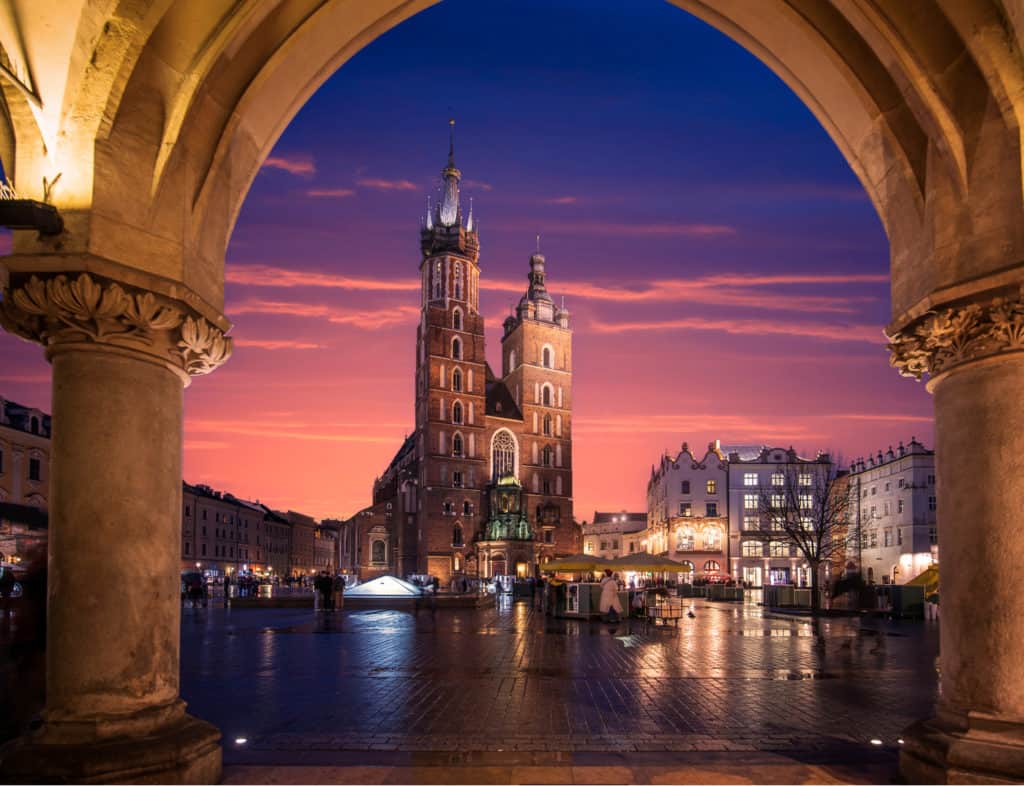
Have a Night Out
Did you know that Krakow’s Old Town has the highest concentration of bars and pubs on earth? As someone that’s done their time leading pub crawls in Budapest, forget the Ruin bars, Krakow’s night scene is quickly becoming one of the best in Europe.
Among the history, tragic and good, is a city that continues to look forward. Its modern outlook and inclusive attitude have helped to form a party capital like few others. Krakow has become a weekend destination for the young and young at heart around Europe, in the same vein as Amsterdam, Berlin and my beloved Budapest.
Krakow’s pulsating nightlife transforms the historic city, changing the personas of Kazimierz and the Old Town. We know Kazimierz to be a hipster neighborhood and its whirlwind nightlife won’t shock many. But the Old Town, with its 14th century basilicas and old trade halls, has more bars than you could ever hope to handle.
On this pub crawl, you can leave the decisions to the experts and mingle with locals as you experience the famed nightlife.
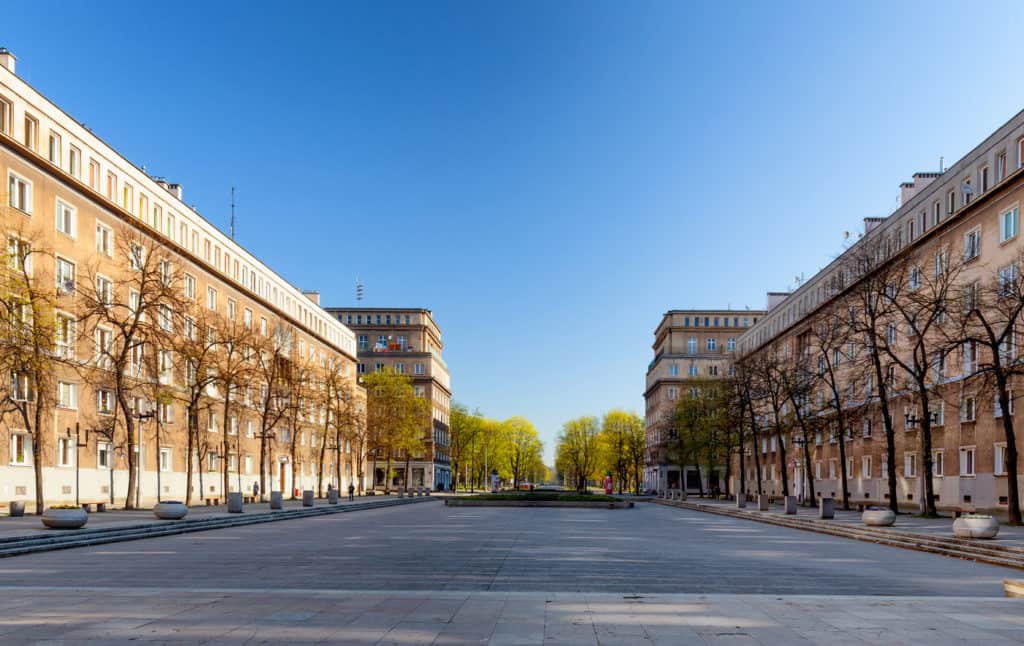
Take a Trip to Nowa Huta
A brief drive east of downtown Krakow, Nowa Huta is one of the more intriguing destinations in the city. It’s a city built from the ground up following a specific laid out plan. The Socialist Realist city is a direct contrast to the Old Town, and Communists hoped that it would overshadow the historic heart of Krakow. The utopian neighborhood started as a dream but fell into regular issues under the communist regime before Poland left the Soviet Union in 1991.
Start off in the Central Square and marvel at the incredible symmetry of the urban space that lacks artistry yet is an exceptional sight. Afterwards venture to the New Steel Mill which upon opening was the largest such mill in Europe. As the legend goes, Fidel Castro didn’t want to see the Wawel Castle and insisted on being taken straight to the mill.
Alongside your NGO guide, learn about Nowa Huta in amazing detail, ride in a Soviet-era car and look for shelters built to prepare for a nuclear war.
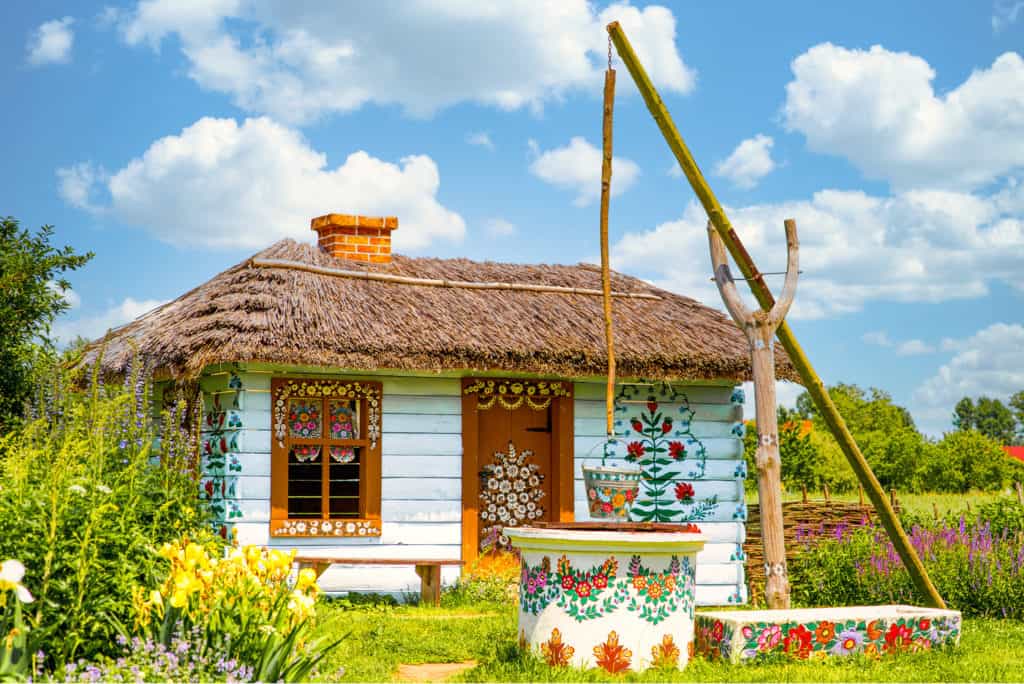
Take a Trip to Zalipie
The vibrant small town of Zalipie is coated with an array of colors. The town is a veritable kaleidoscope around ninety minutes northeast of Krakow. The fascinating painted houses make the town unique while providing you with a different story to bring home.
It’s believed that the tradition of painting the local houses with brightly colored motifs began in the 1700s. For years, the homes became black with chimney soot before being cleaned and painted ahead of important holidays. Annoyed by the repetition, local women decorated their homes in flowers and the trend caught on.
The best thing to do is put your walking shoes on and explore Zalipie on a whim. Many homes are happy to open up the front gate for closeup pictures with paint strewn across all surfaces, from walls to wells. Aside from the homes, there is a cultural center, aka the Painter’s House. Stop for lunch at the picnic tables with beautiful views of the countryside. You’ll also find a gift shop, exhibitions and workshops between May and September.
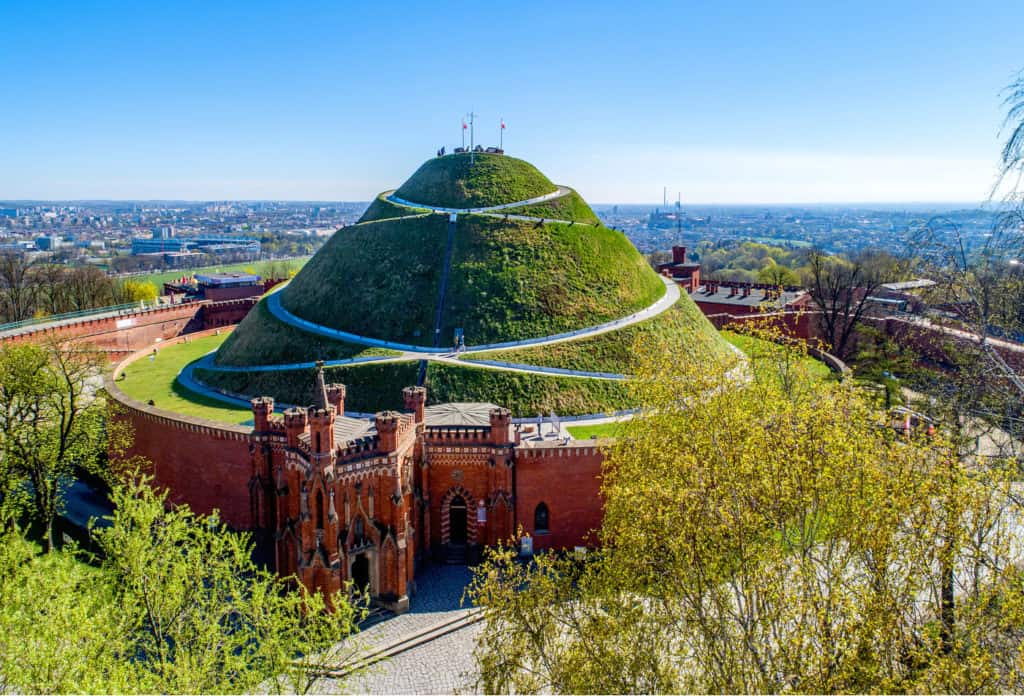
Enjoy the Sunset
Around Krakow there are four mounds, but the one with the most beautiful view is Kopiec (Kosciuszko). The artificial hill was created to commemorate Tadeusz Kosciuszko and saw its first footsteps towards the end of 1823. In the years since, its viewpoint which stands 1,070 feet (326m) high has become one of the best spots in Krakow to take in the sunset.
In the Podgorze district, the mounds central location makes it reasonably easy to get to. From there you can make your way up the stairs, which snaked around Kopiec all the way to the summit. You’ll find yourself among plenty of locals taking the time to walk their dogs or enjoy a spot of fresh air. Find yourself a cozy spot to sit and look down and over the Old Town. As the sun falls, the low hanging light bounces off the old buildings, creating a beautiful mix of warm colors.
If you have time, plan to arrive early so you can also check out Podgorze’s Colorful Straircase. The rainbow stairs are captivating and covered with lovely quotes.
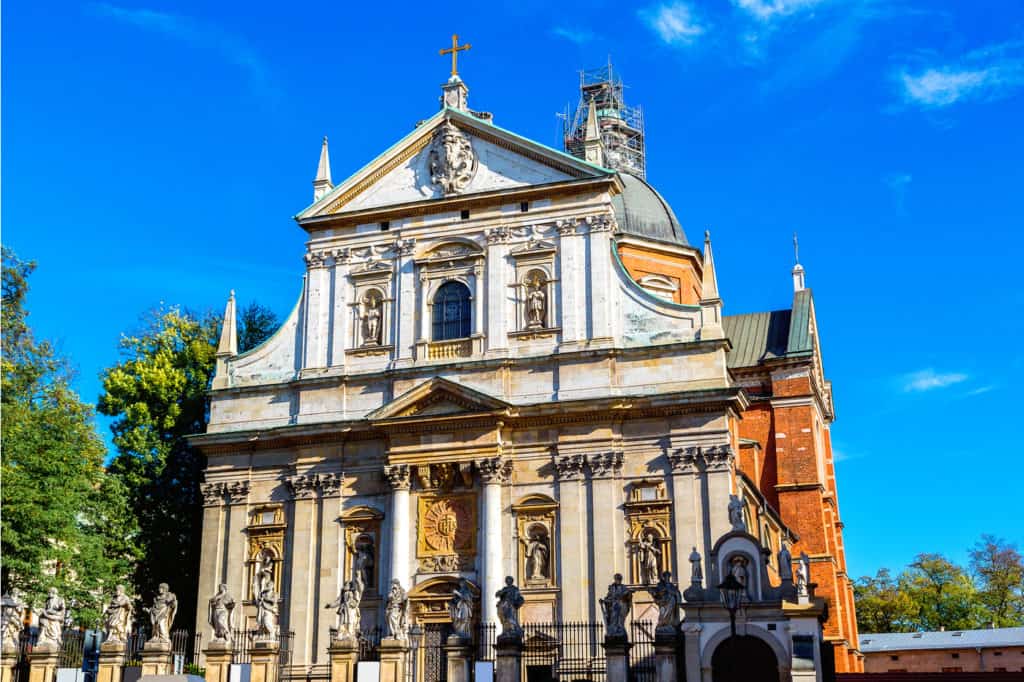
See the Church of St. Peter and St. Paul
You could create a whole article on Krakow’s most noteworthy buildings. But another one you should put high on the itinerary is the Church of St. Peter and St. Paul. The church was one of the first examples of Baroque architecture in Krakow and was designed by the esteemed Giovanni Maria Bernardoni, an Italian architect.
Its facade is complete with complete with a number of Jesuit saints harbored within small archways. It’s an elegant entrance that has the church’s dome peaking out from behind. After entering through the front, made from dolomite, you’ll see the interior’s beautiful stucco work and various frescoes that depict the lives of Saint Peter and Saint Paul.
The best time to visit the church is on Thursday morning. It’s then that the church’s Foucault’s Pendulum swings. Installed in 1949, the pendulum hangs 152 feet (46.5m) above the ground and helps to demonstrate the rotation of the earth.
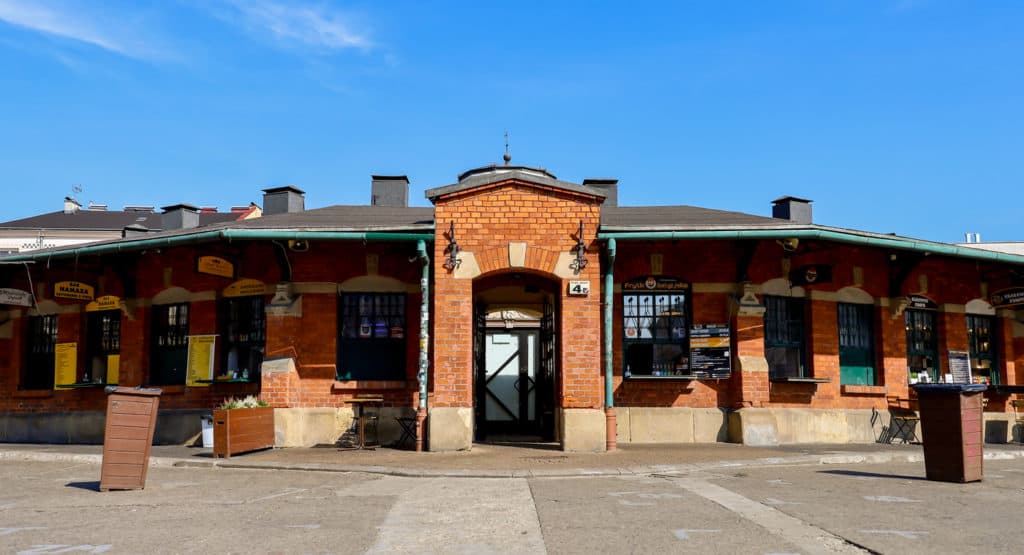
Visit the Markets
Once upon a time, the central squares were the heart and soul of Krakow. They were the spot people gathered and shopped for groceries and necessities. Despite the advent of supermarket chains, the city’s markets are still thriving. Today, there are three historical markets that you can experience.
Plac Nowy is the central square within Kazimierz. Before revelers paint the town, the square plays hosts to many pop up markets throughout the week. These can include Sovet-era trinkets, vintage ware, records and old-fashioned cameras.
For fresh produce, head to Nowy Kleparz. It captures the joyful charm of farmers markets and you’ll find rows of fresh regional produce from fruit, to meats and veg, not to mention artisan cheese and warm baked goods.
Last is Plac Imbamowski. Here, travelers will experience the distinct aura of authenticity as they mingle with locals outside of the Old Town. Explore the aisles manned by local farmers, butchers, bakers and everything but a candlestick maker.
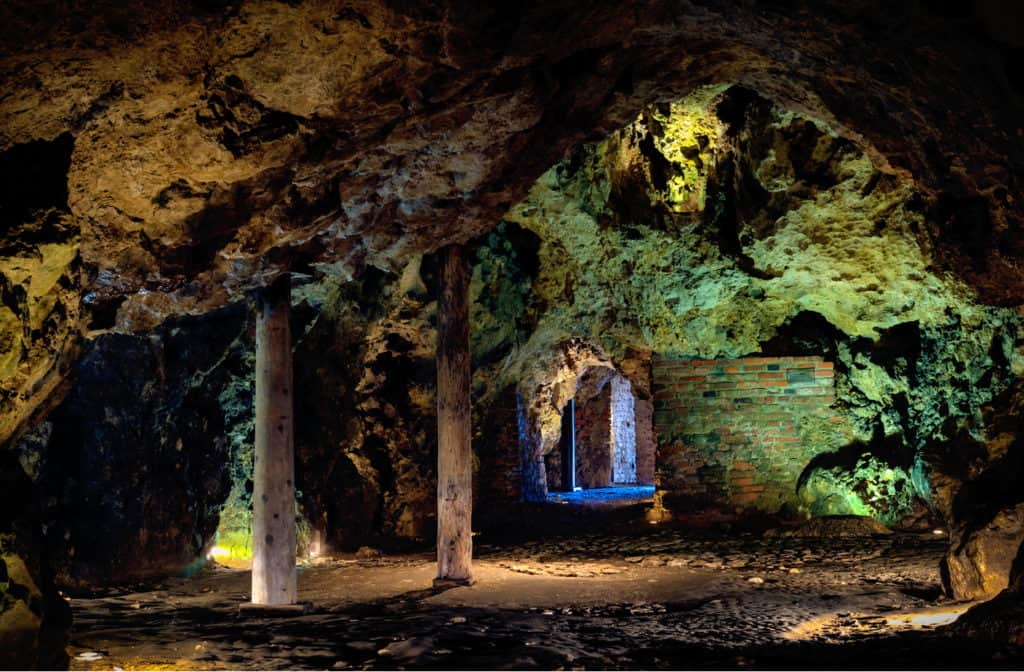
Walk Into the Dragon’s Den
Known locally as Smocza Jama, the Dragon’s Den is the city’s most iconic cave. It’s a karst formation that was once the scene of a legendary battle. Forget David and Goliath, King Krakus slayed the cave’s resident dragon, allowing him the chance to found the city we know and love today.
The facts have yet to be verified, but allow yourself to lean into the mythology of the cave. At its entrance you’ll see a replica of the dragon, standing and still breathing fire. Additionally, you’ll spot real bones from the Ice Age that have been linked to the actual beast.
As you wander through the vast cave from the courtyard of Wawel Royal Castle, you’ll see hints of man-made structures such as columns and brick walls among the limestone stalagmites. Continue on through a light-hearted looked at local history before ending at the Vistula River.
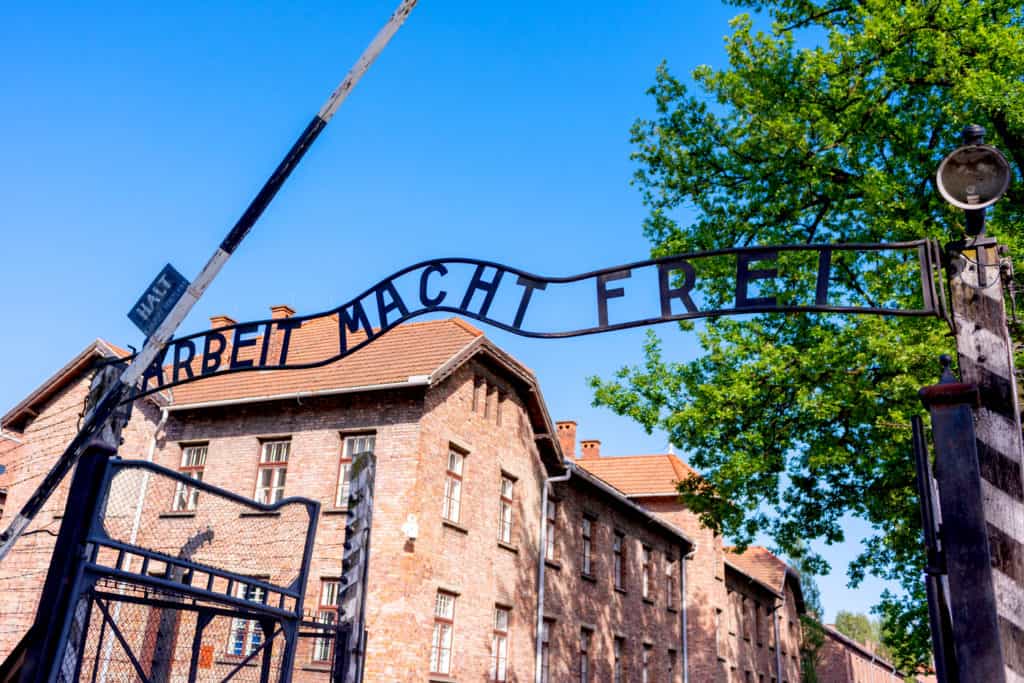
Day Trip to Auschwitz
Just over an hour west of Krakow, Auschwitz-Birkenau was the largest of the Nazi concentration camps. It was here that over 1 million people died. The immense tragedy and weight of the experience is one that will long linger in the minds of any who choose to visit. Such is its place in history, however, that it’s one of the most important places to visit in Krakow.
Tours depart regularly from Krakow, often taking most of the day. So you should set aside a whole day, with some additional time for some reflection. The camp remains eerily the same as what it was during its last days in January, 1945. Walking through the gates will elicit tingles down your spine as you step onto the very paths once shared between prisoners and units from the notorious SS called the Guard Battalion.
You’ll see the train tracks that once carried Jews, gypsies, Poles and prisoners of war into the camp with no tangible hope of escape. Wander by the hospitals and labor fields before the heart-wrenching gas chambers.
Entrance to the memorial is free, however there is a limit of daily visitors, plus a timed entrance. Book ahead of time, or join this guided tour departing from Krakow.

